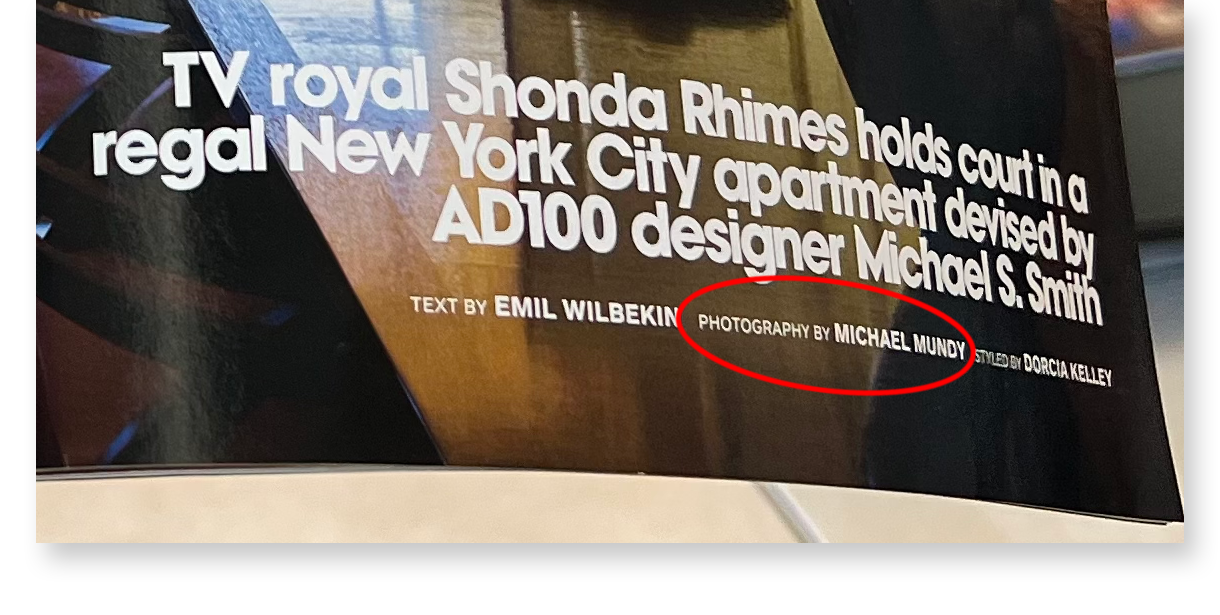The Essential Guide to Properly Crediting Images in Business Materials
Introduction:
In today's visual-centric world, images play a crucial role in enhancing the effectiveness of editorials, magazines, brochures, and even personal projects. However, many business people may not be familiar with the importance of giving proper credit to the photographers or creators of the images they use. This blog aims to shed light on the significance of proper image attribution and provide simple guidelines to ensure your business complies with ethical and legal standards when using images.
Understanding the Importance of Image Attribution:
Crediting images is not just an ethical responsibility, but it also serves legal purposes. Many images are protected by copyright, and unauthorized use can lead to copyright infringement issues and potential legal consequences. By properly crediting the images you use, you show respect for the artists' work and support the creative community.Identifying Image Attribution Requirements:
Before using any image, whether from stock photo websites or social media, familiarize yourself with the specific attribution requirements outlined by the image's creator or the platform where you found it. Some images may be available under Creative Commons licenses, which have specific attribution criteria, while others may require direct permission from the copyright holder.Where to Place the Image Credit:
The placement of the image credit can vary depending on the medium you're using, but it should always be visible and easily associated with the image. In printed materials like editorials and brochures, consider placing the credit next to or below the image. In digital publications, you can include the credit as a caption or a watermark, ensuring it remains with the image wherever it's used.What to Include in the Image Credit:
A proper image credit typically includes the following essential information:
Photographer/Copyright holder's name: Clearly state the name of the individual or entity that owns the copyright to the image. If the image is from a stock photo website, include the name of the website and the photographer if available.
Image title or description (if applicable): Providing a brief description of the image can add context and value to your material.
Source/URL: Include the source or URL where you found the image. This is especially important for digital use, as it enables readers to access the original work.
Avoiding Misleading Attribution:
Ensure that the image credit accurately matches the copyright holder's information. Misattributing an image not only disrespects the artist's work but also exposes your business to potential legal issues. Always verify the source and authorship of the image before including it in your materials.Commercial Use and Licensing:
For business purposes, it's crucial to respect the licensing terms of the images you use. Some images may be free for personal use but require a license for commercial use. Always check the licensing agreements and, if necessary, purchase the appropriate license or seek direct permission from the copyright holder.
Conclusion: Properly crediting images in your business materials not only showcases your commitment to ethical practices but also helps you avoid legal troubles associated with copyright infringement. By respecting the work of photographers and creators, you contribute to a more supportive and respectful creative community. Always remember to identify the source, copyright holder, and any other relevant information when using images, and comply with licensing requirements to use images for commercial purposes. This way, you can confidently enhance your editorials, magazines, brochures, and personal projects with compelling visuals while respecting the rights of the talented artists behind them.
Here’s how to credit within LinkedIn
To tag your photographer use the "@" sign then start typing their name.
More importantly is to create a hyperlink from your article to the photographer’s website. To do this, highlight a word or group of words, select the “Add URL link” from the top, and type the URL address of the photographer’s website. This will create a backlink to the website which will help Google identify professional photographers with authority.
Industry standard when crediting Prints
Always credit the team who created the photograph when it’s use is editorial or personal: See the bottom right?
Commercial or Promotional Images
Typically, a client does not need to provide credit when using the image for advertising and that is because they paid extra money for a commercial license which provides them permission to use the image in this manner.
If you found this article insightful and looking for further reading on the subject, check out our “Crediting Photographers in Editorials & Publications” post. Also, we are always on the lookout for new amazing clients like yourself! Our team has the experience, expertise, and professionalism necessary to capture stunning headshots that will elevate your brand and your attendees. Please contact us for more information about our services.





